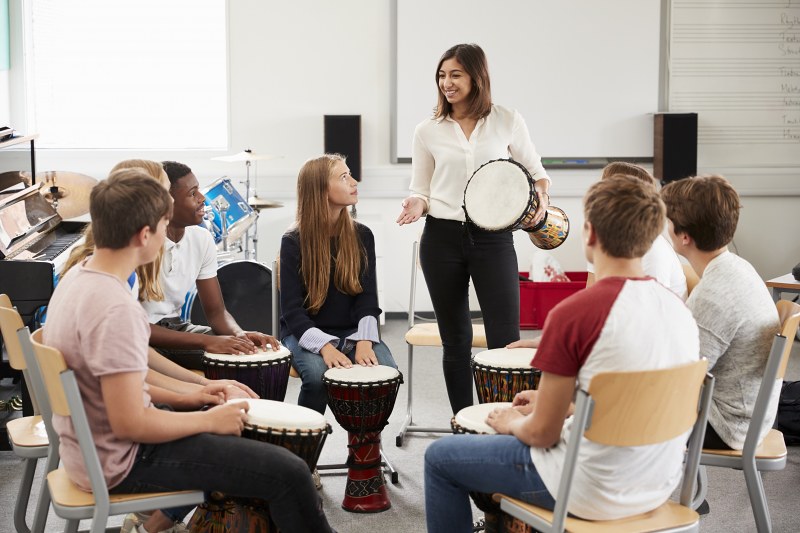Breaking Barriers: How Music Schools Foster Inclusivity and Diversity in the Arts
In the vibrant heart of Tampa, a silent revolution unfolds within the walls of music schools, where the strumming of guitars, the melodious harmonies of pianos, and the rhythmic beats of drums tell tales of inclusivity and diversity. These institutions, known for offering comprehensive music lessons Tampa, are more than just centers for artistic education; they are the melting pots of culture, creativity, and community. In today’s increasingly globalized world, music schools stand as testaments to the power of the arts in bridging divides, celebrating diversity, and fostering an inclusive society.

Introduction: The Harmonic Convergence of Inclusivity and Diversity
The evolution of music education mirrors the changing face of our society, reflecting a broader spectrum of voices and experiences. Tampa, with its rich cultural tapestry, provides the perfect backdrop for this transformative journey. Music schools in this area are not merely educational institutions but vibrant communities where individuals from varied backgrounds find common ground in their shared passion for music. This convergence of different cultures and ideas under one roof exemplifies the essence of inclusivity and diversity, serving as a beacon for other communities to follow.
The Philosophy of Inclusivity in Music Education
At its core, inclusivity in the arts means creating spaces where everyone, regardless of their background, can access, participate in, and enjoy the cultural dialogue. Music education, imbued with this philosophy, becomes a powerful vehicle for social change. It challenges the traditional boundaries of music, incorporating a wide array of musical genres from classical to contemporary, from global folk traditions to electronic music, thereby broadening students’ musical horizons and fostering a deep appreciation for the world’s rich cultural diversity.
In Tampa’s music schools, this inclusive approach transforms the classroom, making it a microcosm of the world outside. Students are not only taught how to play instruments or read music but are also exposed to the stories behind the music, understanding the cultural contexts and histories that shape musical expression. This education goes beyond technical skills, touching the hearts and minds of students, and preparing them to be culturally competent individuals in a diverse world.

Diversity in Harmony: Music Schools as Cultural Melting Pots
Diversity in music education is not just about including a wide range of musical styles but also about recognizing and valuing the unique perspectives each student brings to the table. Tampa’s music schools excel in this, creating environments where students from different ethnicities, religions, and socio-economic backgrounds can collaborate, learn from one another, and grow together. These institutions celebrate their diverse student bodies, organizing multicultural events and showcases that allow students to share their heritage and learn about others’.
Success stories abound, from students of modest means discovering their musical talents through scholarship programs to immigrant children finding a sense of belonging through music that transcends language barriers. These stories highlight the transformative power of music education in fostering mutual respect and understanding among students, contributing to a more inclusive society.
Overcoming Barriers: Accessibility and Affordability
Despite the progress, challenges remain in making music education accessible to all. Financial constraints, lack of resources, and geographical barriers often prevent talented individuals from pursuing their musical dreams. Recognizing this, music schools in Tampa have been pioneering various initiatives to dismantle these barriers. From sliding scale tuition fees and instrument lending programs to offering online lessons that can be accessed from anywhere, these efforts are making music education more accessible than ever before.
Moreover, community support plays a crucial role in these endeavors. Partnerships with local businesses, grants from cultural foundations, and donations from the public help fund scholarships and outreach programs, ensuring that financial hardship does not silence potential musical talent. These initiatives not only open doors for aspiring musicians but also enrich the community with their diverse talents and perspectives.

The Future Sounds of Music Education
Looking ahead, the future of music education is bright, with inclusivity and diversity at its core. Technological advancements are breaking down the remaining barriers, making music more accessible and engaging for students across the globe. From virtual reality music classes that transport students to different cultural settings to apps that allow for collaborative music-making across continents, technology is reshaping the way we learn and experience music.
As music schools continue to embrace these innovations, they are setting the stage for a future where music education is universally accessible, reflecting the diverse tapestry of human experience. This vision for the future is not just about creating skilled musicians but about nurturing empathetic citizens who value diversity and inclusivity, armed with the universal language of music to bridge divides and build a more harmonious world.
In conclusion, music schools in Tampa and across the globe are playing a pivotal role in breaking down the barriers that divide us, using the power of music to foster an inclusive and diverse society. Their efforts remind us that in the symphony of life, each voice matters, and when we come together in harmony, we can create a masterpiece that resonates with the beauty of our shared humanity.
